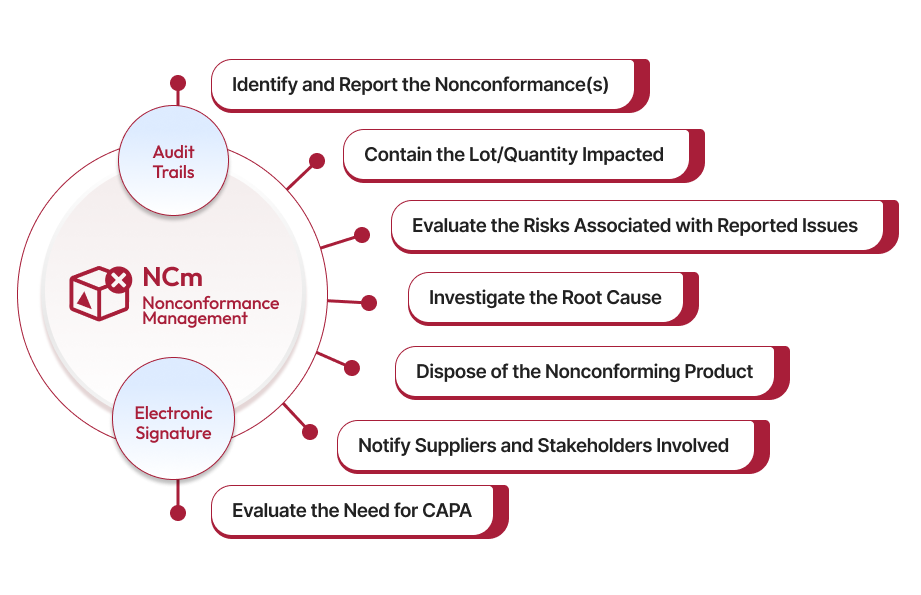
Quality management software system is all about continuous improvement, and that includes identifying and resolving non-conformities. But non-conformities can be a major headache.
Whether it's a manufacturing defect, a service failure, or a documentation error, non-conformities can lead to wasted time, resources, and customer dissatisfaction.
You must make a structured approach to non-conformity management to stay ahead of the curve and ensure that your products or services meet the highest standards.
So, what are some best practices for managing non-conformities? We will find out in this blog.
First, let's define what we mean by non-conformities
In simple terms, non-conformities are instances where something does not meet the required standards or specifications. They can occur in various areas, including manufacturing, service delivery, quality management systems, and more.
Identifying non-conformities is an important step in maintaining the quality of products or services. Without identifying them, there's no way to resolve the issue and prevent it from happening again. So, let's dive into some best practices for identifying and resolving non-conformities.
Best-Practices to Identify and Resolve Nonconformities
- Following are some best-practices you can follow to streamline nonconformance management:
- Have a clear understanding of requirements and standards
- Before you can identify non-conformities, you need to have a clear understanding of the requirements and standards that need to be met. This means thoroughly reviewing and understanding any relevant documentation, such as standards, specifications, or regulations.
Conduct regular audits and inspections
- Regular audits and inspections can help identify non-conformities before they become major issues. It's important to have a structured approach to auditing, including checklists, procedures, and trained auditors.
- Encourage employee involvement
- Your employees are often the ones who will notice non-conformities before anyone else. Encouraging them to report any potential issues can help catch problems early on, before they become major issues.
Prioritize and categorize non-conformities
- Not all non-conformities are created equal. Prioritizing and categorizing them can help you determine which ones are the most critical and require immediate attention. This can also help you allocate resources more effectively.
- Investigate root causes
- Simply addressing the symptoms of a non-conformity won't solve the underlying problem. It's important to investigate the root cause of the issue and take steps to prevent it from happening again.
Implement corrective actions
Once you've identified the root cause of a non-conformity, you need to take corrective actions to address it. This might involve implementing new processes or procedures, providing additional training to employees, or updating documentation.
Monitor and review
Finally, it's important to monitor and review your corrective actions to ensure that they are effective. This might involve conducting follow-up audits or inspections, tracking metrics, or soliciting feedback from employees.
By following these best practices, you can identify and resolve non-conformities more effectively, ultimately leading to higher quality products or services and greater customer satisfaction. Remember, identifying and resolving non-conformities is an ongoing process, so it's important to continually review and improve your procedures to ensure that you're meeting the highest standards.
If you want to streamline and simplify the nonconformance management processes for your team, consider using a software solution like Qualityze Nonconformance Management.
With Qualityze Nonconformance Management Software, you can automate the non-conformance process from start to finish, including identifying, investigating, and resolving non-conformities. The software also provides real-time visibility into non-conformance trends and metrics, allowing you to proactively address potential issues before they become major problems.
Additionally, Qualityze Nonconformance Management is user-friendly and customizable, so you can tailor it to meet the unique needs of your organization. It also integrates with other Qualityze modules, such as CAPA and Change Management, to provide a comprehensive quality management solution.
Therefore, if you're trying to streamline your non-conformance management process and ensure the highest level of quality for your products or services, consider giving Qualityze Nonconformance Management a try.
For more information, Visit the Qualityze website and get in touch with their customer success team.





